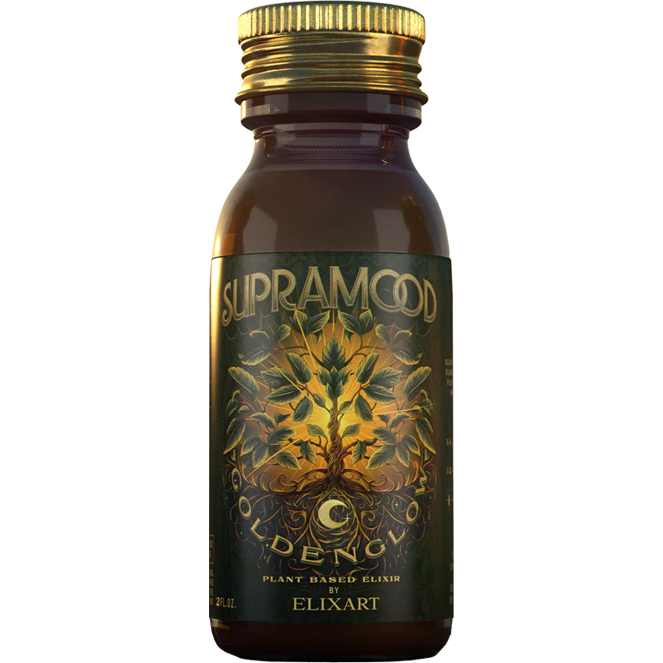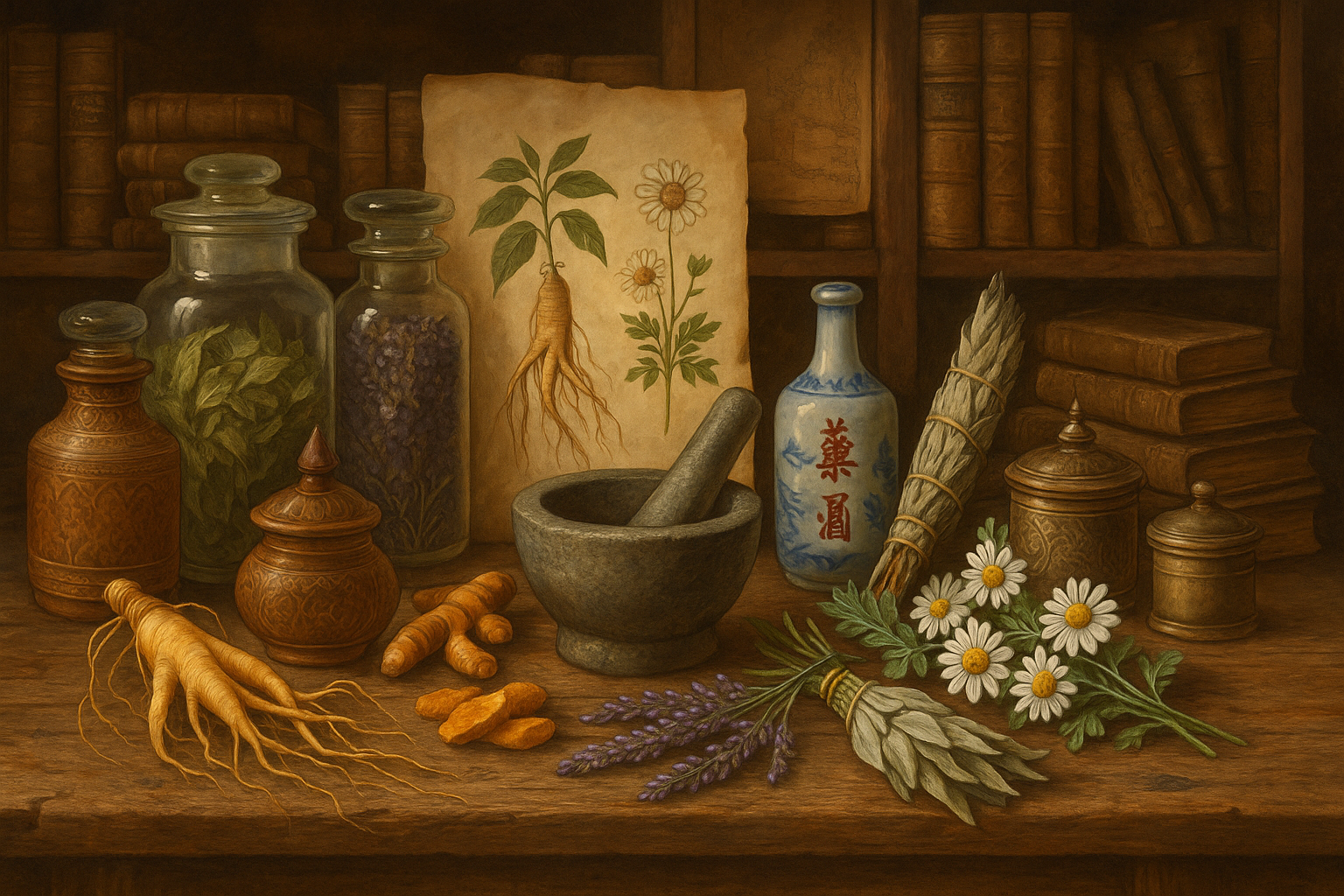Unlocking nature's secrets often leads to incredible discoveries that can transform our understanding of health and wellness. Lesser-known herbal plants hold a treasure trove of medicinal properties that have been largely untapped in modern healthcare.
Exploring these plants is essential for several reasons:
- Diverse Medicinal Properties: Many lesser-known herbs possess unique compounds with antibacterial, antiviral, antifungal, anti-inflammatory, antioxidant, and anti-tumor activities.
- Potential for New Treatments: These plants offer a pool of potential new treatments and therapeutic agents that could address various health conditions.
- Cultural Significance: Traditional knowledge from various cultures highlights the historical use and benefits of these plants, suggesting their long-standing efficacy.
Incorporating herbal medicine into modern healthcare has significant implications:
- Natural Alternatives: Herbal remedies provide natural alternatives to synthetic drugs, which can lead to fewer side effects.
- Holistic Approach: Using plant-based treatments supports a holistic approach to health, considering the body as a whole rather than focusing on isolated symptoms.
- Personalized Medicine: The diverse range of herbal plants allows for more personalized treatment options tailored to individual health needs.
The exploration of lesser-known herbal plants not only enriches medical practice but also honors the traditional wisdom that has sustained human health for centuries.
The Amazing Healing Powers of Lesser-Known Herbal Plants
Understanding the healing powers of lesser-known herbal plants opens up new possibilities for better health and wellness. These plants, often overlooked, offer a wide range of benefits.
Overview of the Lesser-Known Herbal Plants Studied for Medicinal Properties
- Epiphyllum oxypetalum Haw.
- Laurel (Laurus nobilis L.)
- Agastache
- Echinacea pallida
- Echinacea purpurea
- Campanula rapunculoides
- Campanula latifolia
- Codonopsis clematidea
Antibacterial Properties of Epiphyllum Oxypetalum Haw.
Epiphyllum oxypetalum Haw. is known for its antibacterial properties. Studies have shown that it can effectively fight against various bacterial strains, making it a potential natural remedy for bacterial infections.
Antiviral Potential of Laurel (Laurus nobilis L.)
Laurel (Laurus nobilis L.) has significant antiviral properties. Research indicates that it can inhibit viral replication, providing a natural option for dealing with viral infections.
Antifungal Properties of Agastache
Agastache is known for its strong antifungal activities. It has been found to be effective against several types of fungi, offering a natural solution for fungal infections.
Anti-inflammatory Effects of Echinacea Pallida and Echinacea Purpurea
Both Echinacea pallida and Echinacea purpurea are well-known for their anti-inflammatory effects. These plants can help reduce inflammation, providing relief from various inflammatory conditions.
Antioxidant Activities of Campanula Rapunculoides and Campanula Latifolia
Campanula rapunculoides and Campanula latifolia have been found to have antioxidant activities. Their ability to counteract harmful free radicals in the body contributes to overall health and helps prevent diseases related to oxidative stress.
Anti-tumor Potential of Codonopsis Clematidea
Codonopsis clematidea shows promise in fighting tumors. Research has shown that it can inhibit the growth of tumors, suggesting its potential role in cancer treatment.
Exploring these lesser-known herbal plants reveals their amazing healing powers that can improve health and well-being naturally.
Essential Oils from Lesser-Known Herbal Plants: Pharmacological Actions and Potential Uses
Essential oils derived from lesser-known herbal plants offer a treasure trove of pharmacological actions. Extracted through methods like steam distillation and cold pressing, these oils encapsulate the plant's essence in a concentrated form.
Pharmacological Actions
The essential oils of plants such as Epiphyllum oxypetalum Haw., Laurus nobilis L., and Agastache exhibit a wide range of therapeutic properties:
- Antibacterial: Essential oils from Epiphyllum oxypetalum Haw. have been shown to combat bacterial infections.
- Antiviral: Laurus nobilis L. essential oil is noted for its antiviral properties, making it useful in fighting off viral infections.
- Anti-inflammatory: Agastache essential oil helps reduce inflammation, easing conditions like arthritis and muscle pain.
Potential Uses in Medicine
These essential oils hold promise for various medical applications:
- Topical Treatments: Due to their antibacterial and anti-inflammatory properties, essential oils can be used in creams and ointments to treat skin conditions.
- Aromatherapy: The calming and therapeutic effects of these oils make them popular in aromatherapy practices, helping with stress reduction and mental well-being.
- Internal Use: Some essential oils are being explored for internal use under medical supervision to treat digestive issues and boost the immune system.
The production of these essential oils not only diversifies the medicinal landscape but also opens avenues for sustainable agricultural practices.
Traditional Use of Lesser-Known Herbal Plants in Various Cultures
Overview of Traditional Use
Lesser-known herbal plants have played a pivotal role in traditional medicine across different cultures. These plants, often overshadowed by more commonly known herbs, have been utilized for their unique medicinal properties.
Cultural Significance
In many societies, these plants hold cultural importance:
- Epiphyllum oxypetalum Haw.: Commonly known as the "Queen of the Night," this plant is revered in some cultures for its nocturnal blooming and associated with spiritual rituals.
- Laurel (Laurus nobilis L.): Widely used in Mediterranean cultures, laurel leaves are traditionally believed to bring protection and prosperity.
- Agastache: Known for its aromatic properties, Agastache has been used in Native American traditions for treating respiratory ailments and digestive issues.
Historical Medicinal Properties
Historical records highlight the medicinal applications of these plants:
- Echinacea pallida and Echinacea purpurea: Indigenous tribes in North America used Echinacea species to treat infections, wounds, and snake bites due to their immune-boosting qualities.
- Campanula rapunculoides and Campanula latifolia: In European folklore, these plants were used as remedies for earaches and other ailments owing to their anti-inflammatory properties.
- Codonopsis clematidea: Often referred to as "Poor Man's Ginseng," this plant has been used in traditional Chinese medicine to enhance stamina and vitality.
These examples underscore the deep-rooted connection between lesser-known herbal plants and cultural practices worldwide. The historical use of these herbs provides valuable insights into their potential health benefits.
Current Research and Studies on Lesser-Known Herbal Plants
Researchers have been conducting studies on lesser-known herbal plants, revealing their significant medicinal properties that could be beneficial for modern healthcare.
Research Initiatives
Numerous studies focus on understanding the bioactive compounds in these plants and their pharmacological effects. For instance, Epiphyllum oxypetalum Haw. has been studied for its antibacterial properties, showing potential against various bacterial strains. Echinacea pallida and Echinacea purpurea are being researched for their anti-inflammatory effects, which could benefit conditions such as arthritis.
Recent Studies
Recent studies validate the medicinal properties of these plants:
- Anti-inflammatory Effects: A study on Echinacea pallida demonstrated its potential to reduce inflammation markers in animal models.
- Antioxidant Activities: Research on Campanula rapunculoides and Campanula latifolia found high levels of antioxidants, suggesting their use in combating oxidative stress.
- Anti-Tumor Potential: Investigations into Codonopsis clematidea are revealing promising results in inhibiting tumor cell growth.
Health Benefits
The consumption or use of these plants may offer several health benefits:
- Immune Support: The antibacterial properties of Epiphyllum oxypetalum Haw. can enhance immune defense.
- Reduced Inflammation: Using extracts from Echinacea species can help alleviate inflammatory conditions.
- Oxidative Stress Reduction: Antioxidants from Campanula species support overall cellular health by neutralizing free radicals.
- Cancer Prevention: Preliminary findings suggest that compounds within Codonopsis clematidea may provide protective effects against cancer.
Research continues to explore these plants' full potential, bridging traditional knowledge with scientific validation.
The Future of Herbal Medicine: Untapped Potential in Lesser-Known Plant Species
To embrace the future of herbal medicine, we must explore the untapped potential of lesser-known plant species. These plants are essential in expanding and strengthening herbal medicine practices. Epiphyllum oxypetalum Haw., Echinacea pallida, Campanula latifolia, and other plants have unique healing properties that can complement well-known herbal remedies.
Why It Matters
1. Diversification: Integrating these lesser-known plants can provide a broader range of therapeutic options.
2. Strengthening Practices: Their unique properties enhance the effectiveness of existing treatments.
Conserving and sustainably growing these plants is crucial. Excessive harvesting and loss of natural habitats put their availability at risk, making conservation efforts vital. Sustainable cultivation methods ensure we can continue to access these valuable resources in the future.
How We Can Make a Difference
1. Conservation: Implementing strategies to protect natural habitats.
2. Sustainable Cultivation: Encouraging ethical harvesting and cultivation practices.
Unlocking the full potential of these plants requires collaboration among researchers, practitioners, and conservationists. By acknowledging their significance, we open doors to a more diverse and effective approach to herbal medicine.
Harnessing the Power of Nature: Incorporating Lesser-Known Herbal Plants into Your Wellness Routine
Harnessing the Power of Nature to improve your health can be both rewarding and effective. Incorporating lesser-known herbal plants into your wellness routine can provide unique benefits. Here are some practical tips for using these plants:
Herbal Plants and Their Uses
- Epiphyllum oxypetalum Haw.: Brew the dried flowers into a calming tea known for its antibacterial properties.
- Echinacea pallida and Echinacea purpurea: Utilize these plants in teas or capsules to boost your immune system and reduce inflammation.
- Campanula rapunculoides and Campanula latifolia: Include these in salads or smoothies to take advantage of their antioxidant activities.
- Codonopsis clematidea: Often used in Asian cuisine, you can add this herb to soups for its potential anti-tumor benefits.
Precautions and Considerations
Using herbal remedies requires mindful consideration:
- Consultation: Always consult with a healthcare professional before introducing new herbal plants into your regimen, especially if you are taking medications.
- Dosage: Adhere to recommended dosages to avoid adverse effects. Overuse can lead to toxicity.
- Allergies: Be aware of possible allergic reactions. Start with small amounts to test your body's response.
- Quality: Ensure that you source high-quality, organic herbs free from pesticides and contaminants.
By following these guidelines, you can safely integrate lesser-known herbal plants into your wellness routine, tapping into nature's vast potential for health enhancement.
Embracing a Holistic Approach: Combining Traditional Knowledge with Scientific Advancements
Integrating traditional wisdom with modern research is crucial for unlocking the full potential of herbal plants for health. Traditional knowledge offers a rich repository of information about the medicinal uses of various plants, often passed down through generations. This wisdom provides invaluable insights into the practical applications and benefits of these plants.
Traditional knowledge often highlights how specific herbal plants can be used safely and effectively. For instance, indigenous practices may reveal optimal preparation methods or ideal dosages that maximize benefits while minimizing side effects.
Scientific advancements play an equally important role by validating and expanding upon this traditional knowledge. Modern techniques such as chromatography and mass spectrometry allow for precise identification of active compounds in herbal plants. These methods enhance our understanding of how these compounds interact within the body, leading to more effective treatments.
Example: Echinacea species have long been used in traditional medicine for their immune-boosting properties. Recent studies have confirmed these effects, identifying specific polysaccharides and alkylamides responsible for stimulating the immune system.
Combining these two approaches creates a holistic perspective that leverages both historical experience and cutting-edge science. This synergy not only validates traditional uses but also opens new avenues for innovative applications in modern healthcare.
Final Thoughts
Exploring herbal plants and uncovering their hidden properties is a fascinating journey that can lead to numerous health benefits. It's time to discover the potential of these lesser-known herbs and incorporate them into our lives for better well-being.
Both traditional knowledge and scientific research play crucial roles in understanding and utilizing these natural remedies effectively. By combining the wisdom of ancient traditions with modern advancements, we can tap into the incredible healing power of nature.
So let's embark on this exciting quest to unlock Nature's secrets and experience the transformative effects it can bring to our health and vitality!
FAQs (Frequently Asked Questions)
Why is it important to explore lesser-known herbal plants for health?
Exploring lesser-known herbal plants is crucial because they may contain unique medicinal properties that could contribute to improving health and well-being. By studying these plants, we can uncover new sources of natural remedies and expand our knowledge of herbal medicine.
What are the remarkable medicinal properties of some lesser-known herbal plants?
Some of the remarkable medicinal properties of lesser-known herbal plants include antibacterial effects, antiviral potential, antifungal properties, anti-inflammatory effects, antioxidant activities, and anti-tumor potential. These properties make these plants valuable in traditional and modern healthcare practices.
What are essential oils from lesser-known herbal plants and their potential uses?
Essential oils extracted from lesser-known herbal plants have a wide range of pharmacological actions, making them valuable in medicine and essential oil production. These oils offer potential benefits for various health conditions and can be used in aromatherapy, topical applications, and other therapeutic practices.
How have lesser-known herbal plants been traditionally used in various cultures?
Lesser-known herbal plants have been traditionally used in various cultures for their medicinal properties. They hold cultural significance in different societies and have historical associations with healing practices. The traditional use of these plants reflects the deep-rooted connection between nature and human health.
What is the current status of research on lesser-known herbal plants?
Current research initiatives on lesser-known herbal plants aim to validate their medicinal properties and explore their potential health benefits. Recent studies have provided evidence supporting the traditional uses of these plants, shedding light on their therapeutic value in modern healthcare.
How can we incorporate lesser-known herbal plants into our wellness routine?
Incorporating lesser-known herbal plants into a wellness routine can be achieved through practical tips such as using them in teas, tinctures, or topical applications. It's important to consider precautions and consult with a healthcare professional when using herbal remedies to ensure safe and effective integration into daily wellness practices.







Leave a comment
This site is protected by hCaptcha and the hCaptcha Privacy Policy and Terms of Service apply.